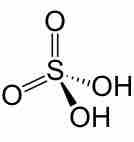Heterogeneous Equilibria
In heterogeneous equilibria, compounds in different phases react. For example, equilibrium could exist between solid and gaseous species, between liquid and aqueous species, etc.
Example
The following equilibrium system involves both gas and solid phases:
Therefore, the equilibrium expression for this reaction will be written as:
C(s) is omitted from the expression because it exists in the solid phase. The reason for this is because the concentration of a pure solid or a pure liquid is always the same; its "concentration" is really its density, which is uniform regardless of sample size. As a result, the activity, or ideal concentration, of a liquid or a solid is defined as 1. Since their activity is unity, and anything multiplied by 1 remains itself, solids and liquids have no effect whatsoever on the equilibrium expression. The above expression reduces to:
Multiple Equilibria
In multiple equilibria, the equilibrium can be split into two or more steps. Both steps must be included in the equilibrium constant equation.
Example
Consider the case of a diprotic acid, such as sulfuric acid. Diprotic acids can be written as H2A. When dissolved in water, the mixture will contain H2A, HA-, and A2-. These equilibria can be split into two steps:
K1 and K2 are examples the equilibrium constants for each step. Next, we can write out the overall reaction equation, which is a sum of these two steps:
Notice that the equilibrium expression for the overall reaction, Keq, is equal to the product of the equilibrium expressions for the two reaction steps. Thus, for a reaction involving two elementary steps:

Sulfuric acid
Sulfuric acid, the molecule pictured here, is an example of a diprotic acid.